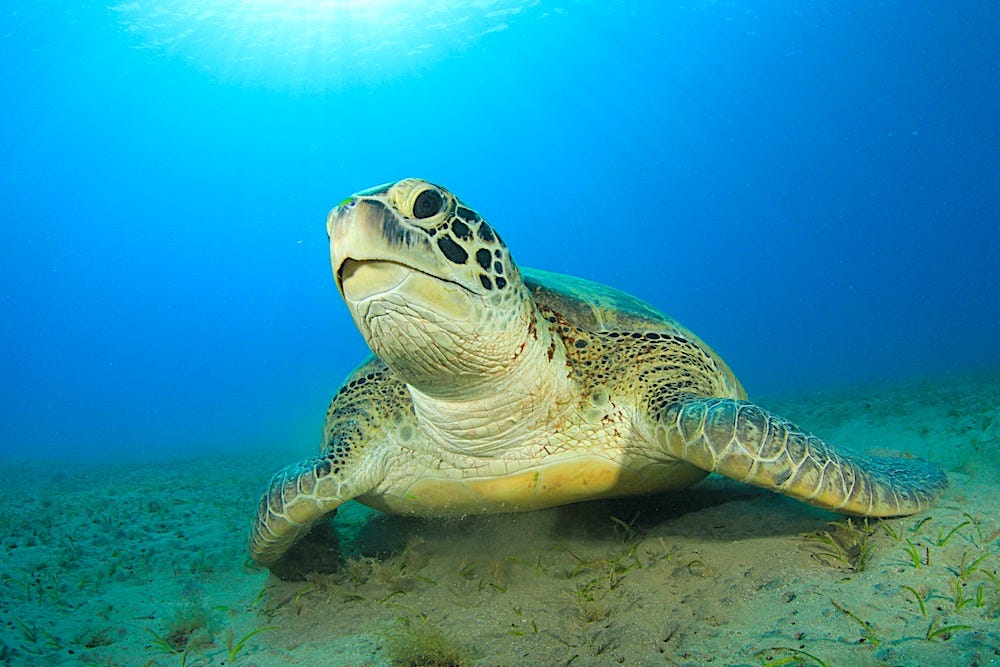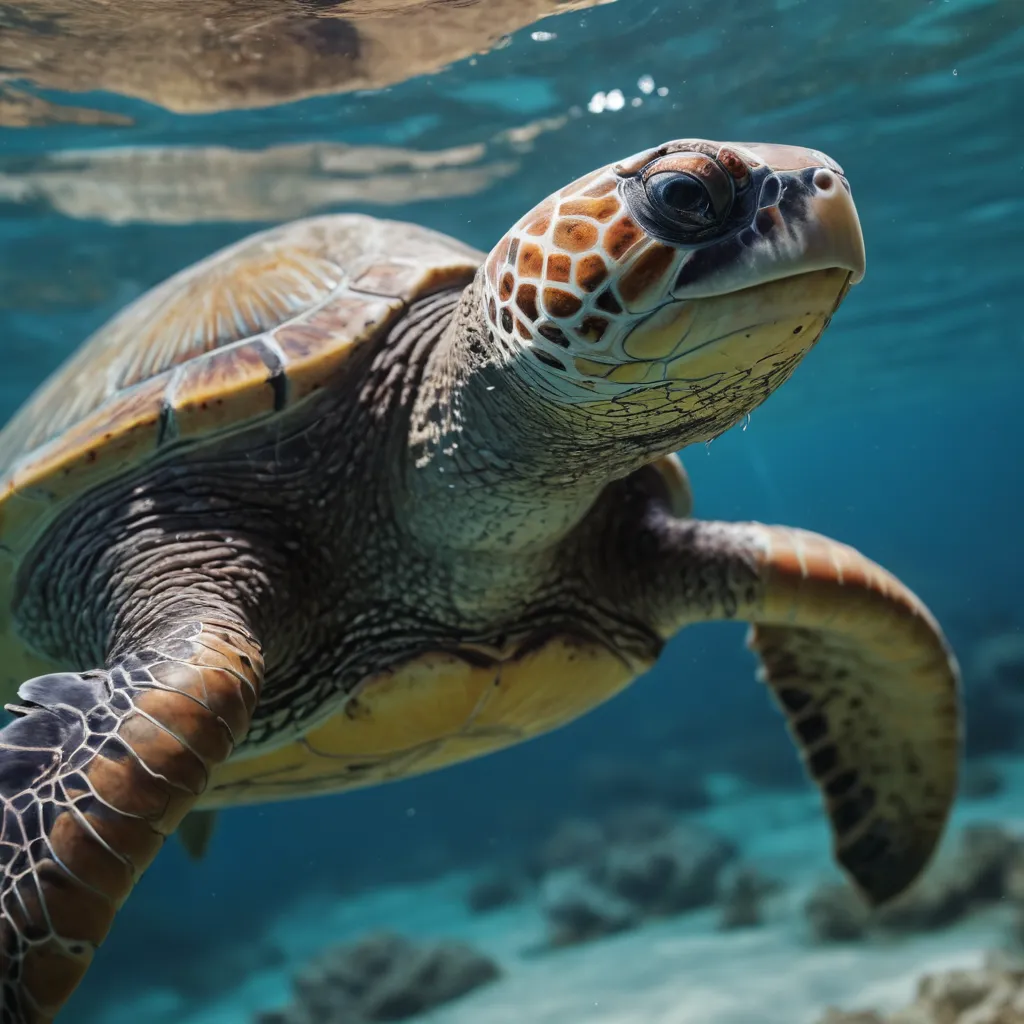
The Unsung Architects of the Deep: Why Sea Turtles are Indispensable to Turtle Island’s Marine Ecosystem
TURTLE ISLANDS, Sulu Sea – In the heart of the Sulu Sea, straddling the maritime borders of Malaysia and the Philippines, lies a cluster of emerald gems known collectively as the Turtle Islands. These islands are more than just picturesque havens; they are sacred grounds for some of the ocean’s most ancient mariners – sea turtles. Far from being mere inhabitants, these majestic reptiles are the unsung architects and tireless gardeners of the marine ecosystem, their very existence pivotal to the health and biodiversity of these critical waters. To understand Turtle Island is to understand the indispensable role of its namesake, for without the turtles, the entire intricate web of life here would unravel.
"The Turtle Islands are a living laboratory," explains Dr. Anya Sharma, a marine ecologist who has spent years studying the region. "They represent one of the last bastions where sea turtles still fulfill their full ecological potential, offering us a rare glimpse into a truly balanced marine environment. Their roles extend far beyond what most people imagine."
The Green Turtle: Lawnmowers of the Sea
Perhaps the most visible and impactful role is played by the Green Sea Turtle ( Chelonia mydas). These gentle giants are the primary herbivores of the marine world, acting as crucial "lawnmowers" of seagrass beds. The waters surrounding Turtle Island boast extensive meadows of seagrass, vital nurseries and feeding grounds for countless marine species, from juvenile fish to dugongs.
Green turtles graze on these seagrass beds, keeping them trimmed and healthy. This grazing prevents the seagrass from becoming overgrown, which can stifle growth, reduce nutrient circulation, and create anoxic (oxygen-depleted) conditions. By regularly cropping the blades, green turtles stimulate new, more nutrient-rich growth, much like how grazing animals maintain grasslands on land. Without this constant pruning, seagrass beds can become choked and unhealthy, leading to a cascade of negative effects throughout the ecosystem.

"It’s a delicate balance," notes Lim Wei Jun, a conservationist who has dedicated two decades to the Turtle Islands Park. "If you remove the green turtles, the seagrass beds suffer. They become less productive, less diverse, and ultimately, less capable of supporting the marine life that depends on them. We’ve seen this in other regions where turtle populations have collapsed – the entire ecosystem begins to degrade."
The Hawksbill Turtle: Guardians of the Coral
While Green turtles tend the seagrass, the critically endangered Hawksbill Sea Turtle (Eretmochelys imbricata) takes on a different, equally vital role: the protection of coral reefs. Hawksbills possess a distinctive, narrow beak, perfectly adapted for reaching into crevices and feeding on sponges. Sponges, while a natural component of coral reefs, can overgrow and smother corals if left unchecked.
A single Hawksbill turtle can consume over 1,200 pounds of sponges annually. By preying on these sponges, Hawksbills prevent them from outcompeting and overwhelming the slower-growing corals. This selective predation helps maintain the structural integrity and biodiversity of coral reefs, which are the rainforests of the ocean, supporting a quarter of all marine species. On Turtle Island, where vibrant coral reefs are a testament to a healthy ecosystem, the presence of Hawksbills is a clear indicator of ecological balance.
"Hawksbills are the unsung heroes of coral reefs," emphasizes Dr. Sharma. "They are essentially the gardeners who prune back the ‘weeds’ that threaten the corals. Without them, we’d see a significant shift in reef composition, likely towards sponge dominance, which would drastically reduce the habitat available for fish and other invertebrates."
Nutrient Conveyors and Beach Architects
Beyond their direct impact on marine flora and fauna, sea turtles play a unique role in connecting marine and terrestrial ecosystems. Female turtles, particularly the Green and Hawksbill species abundant on Turtle Island, emerge from the ocean to nest on sandy beaches. During nesting season, thousands of eggs are deposited into the sand.
Not all eggs hatch, and not all hatchlings survive the arduous journey to the sea. The unhatched eggs and deceased hatchlings decompose on the beach, releasing vital marine-derived nutrients – nitrogen, phosphorus, and potassium – into the otherwise nutrient-poor sandy soil. These nutrients enrich the beach environment, supporting coastal vegetation and creating a richer micro-ecosystem that benefits insects, birds, and other terrestrial life.
"When you think about the sheer biomass of eggs laid on these beaches, it’s an incredible transfer of nutrients from the ocean to the land," explains Lim Wei Jun. "It helps stabilize the dunes, supports unique coastal flora, and essentially fertilizes the very ground where future generations of turtles will be born. It’s a full-circle contribution."

Keystone and Indicator Species
Sea turtles are often considered both keystone and indicator species. A keystone species is one whose removal would cause a disproportionately large impact on its ecosystem, leading to significant changes or even collapse. As demonstrated by their roles in seagrass and coral reef health, turtles fit this description perfectly.
As indicator species, their health and population trends serve as a barometer for the overall health of the marine environment. A decline in turtle populations, particularly in a stronghold like Turtle Island, would signal broader issues such such as ocean pollution, habitat degradation, climate change impacts, or overfishing – problems that affect not just turtles but the entire food web.
The presence of robust populations of Green and Hawksbill turtles on Turtle Island is a powerful testament to the relative health of its surrounding waters and a call to action for their continued protection. Their long lifespans and migratory patterns mean they are exposed to conditions across vast oceanic distances, making them excellent environmental sentinels.
The Broader Web: Other Species and Interconnections
While Green and Hawksbill turtles are the primary residents of Turtle Island, other species like the Loggerhead (Caretta caretta) and Olive Ridley (Lepidochelys olivacea) also utilize these waters and contribute to the ecological balance. Loggerheads, with their powerful jaws, feed on bottom-dwelling crustaceans and mollusks, helping to regulate these populations. Leatherbacks (Dermochelys coriacea), though less common around the islands themselves, are oceanic wanderers that control jellyfish populations, preventing blooms that can devastate fish stocks.
Furthermore, sea turtles themselves are integral parts of the food chain. Their eggs and hatchlings provide a crucial food source for a variety of predators, including crabs, birds, and sharks. Even adult turtles, though less frequently preyed upon, contribute to the ecosystem upon their eventual demise, providing nutrients to scavengers and decomposers.
Threats and the Urgency of Conservation
Despite their critical roles, sea turtles globally face unprecedented threats: plastic pollution, climate change-induced rising sea levels impacting nesting beaches, habitat destruction, accidental bycatch in fishing gear, and illegal poaching. Turtle Island, while a sanctuary, is not immune to these pressures.
"The work here is never done," states Lim Wei Jun. "We are constantly battling against the tide of human impact. Every piece of plastic we remove from a nesting beach, every fisherman we educate, every poacher we deter – it’s all about ensuring these turtles can continue to perform their vital ecological duties."
The loss of sea turtles would not just be an aesthetic tragedy; it would be an ecological catastrophe. The vibrant seagrass meadows would become barren, coral reefs would be smothered, and the intricate transfer of nutrients between land and sea would cease. The very foundation of the marine ecosystems of places like Turtle Island would crumble.
A Beacon of Hope and Responsibility
Turtle Island stands as a global beacon for sea turtle conservation, a place where dedicated rangers, scientists, and local communities work tirelessly to protect these ancient mariners. It is a place where one can still witness the majestic spectacle of a mother turtle returning to the beach where she was born, ensuring the continuation of life and the perpetuation of her species’ essential ecological contributions.
The story of sea turtles on Turtle Island is a powerful reminder that every species, no matter how humble or grand, plays a unique and indispensable role in the grand tapestry of life. Their survival is not just about saving an iconic species; it is about preserving the health, resilience, and biodiversity of our oceans. As we look to the future, the fate of these unsung architects of the deep lies firmly in our hands, a responsibility we must embrace with unwavering commitment.


